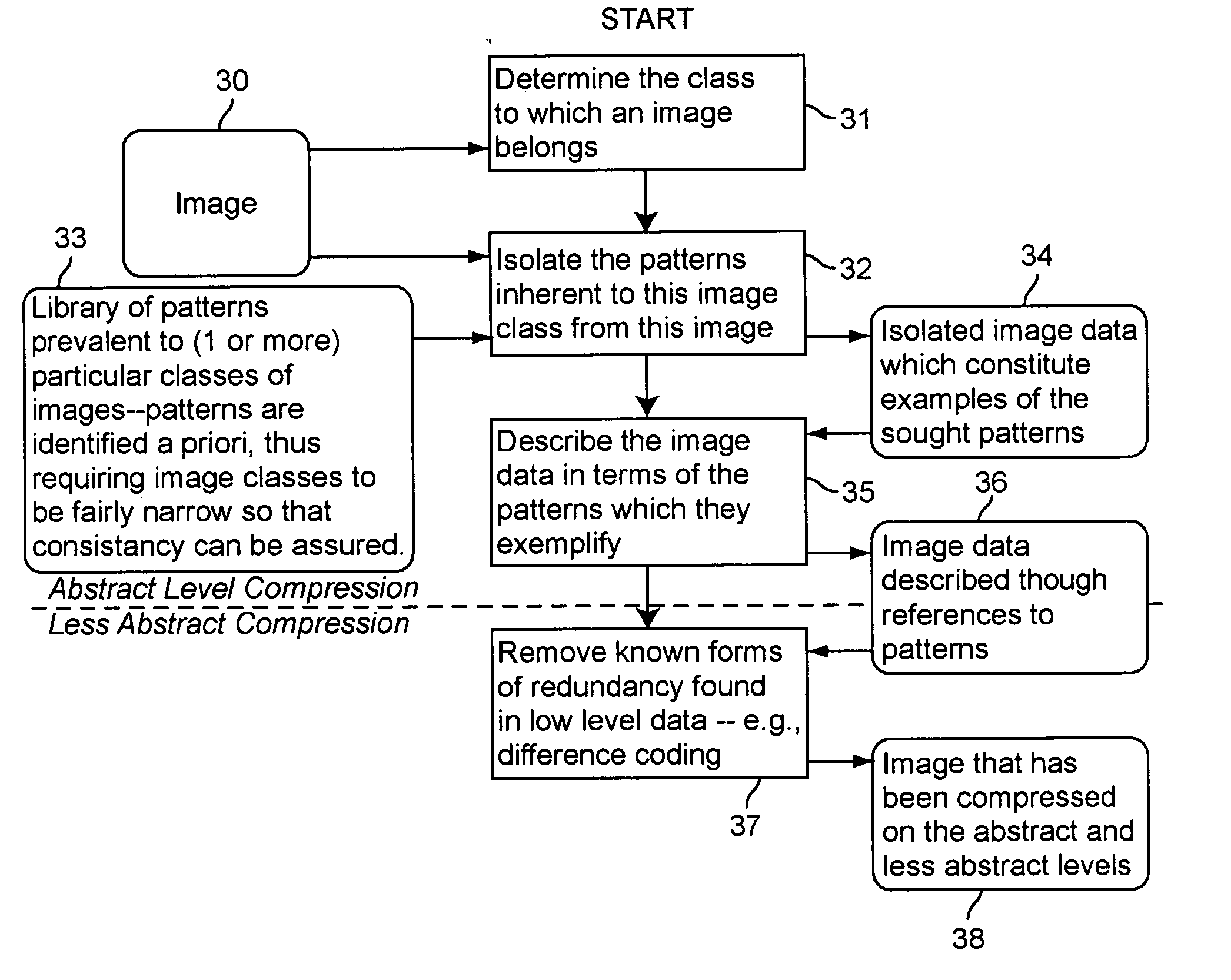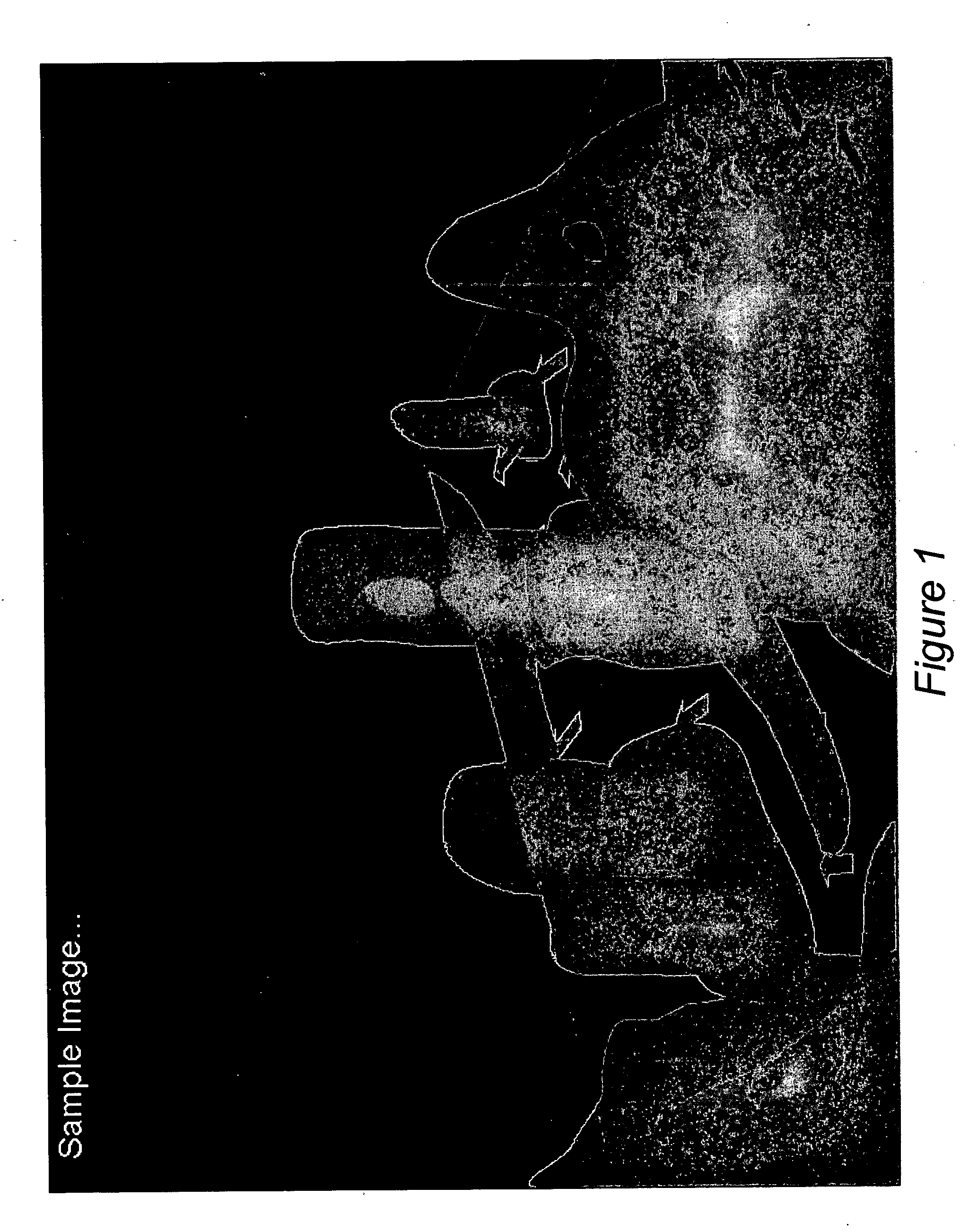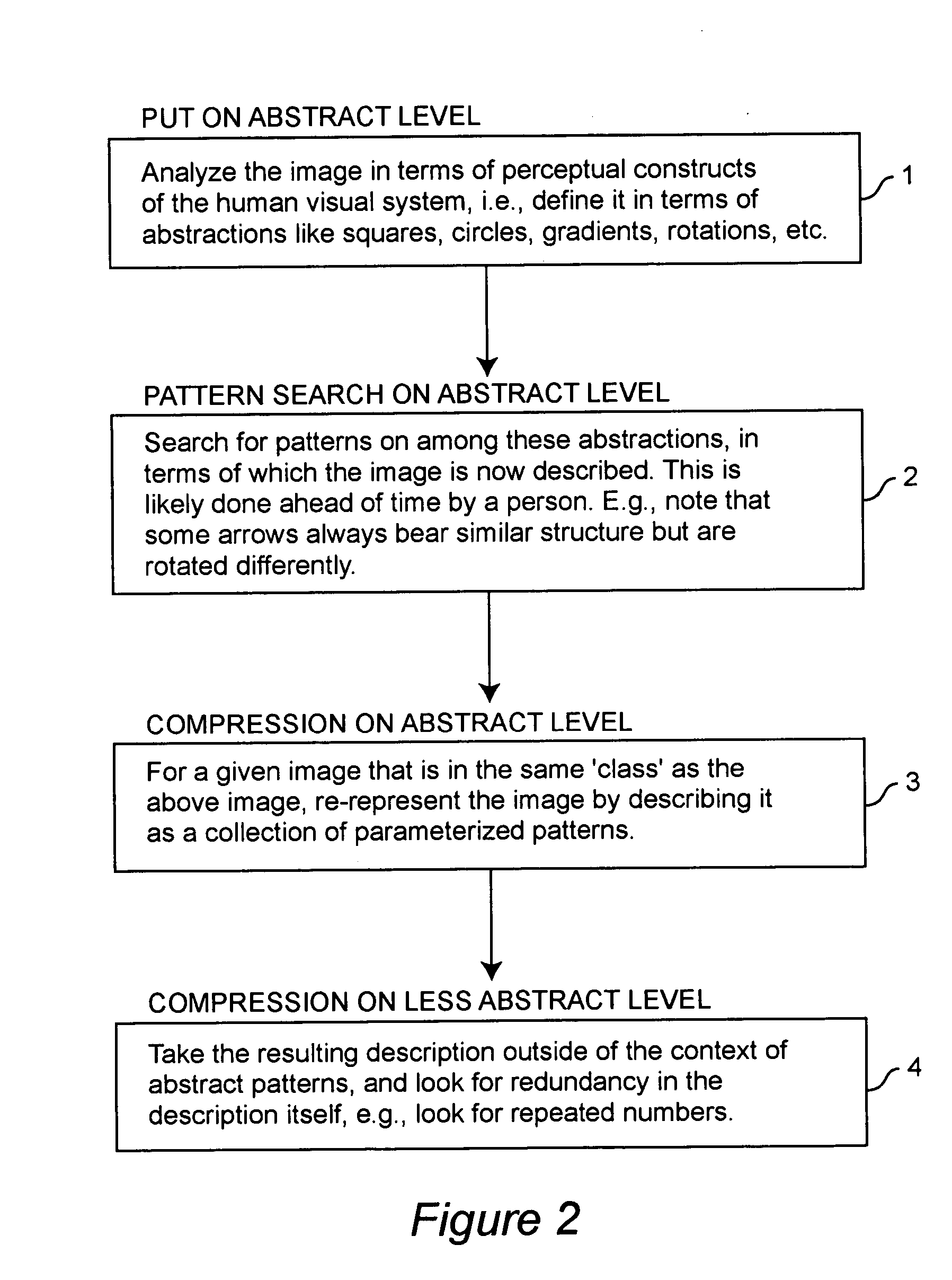Narrow field abstract meta-data image compression
a meta-data and abstract technology, applied in image data processing, instruments, television systems, etc., can solve the problems of limited bandwidth becoming the primary bottleneck and particular difficulty, and achieve the effect of reducing the abstraction level of pixels, efficient representation, and improving compression ratio
- Summary
- Abstract
- Description
- Claims
- Application Information
AI Technical Summary
Benefits of technology
Problems solved by technology
Method used
Image
Examples
Embodiment Construction
[0022] Referring again to the drawings, and more particularly to FIG. 2, there is shown, in general terms, the basic idea of the invention. The process begins in step 1 by analyzing the image in terms of perceptual constructs of the human visual system; i.e., the image is defined in terms of abstractions, such as squares, circles, gradients, rotations, and the like. Next, in step 2, patterns are searched for among these abstractions (the abstractions are also, of course, patterns). The image is now able to be described in terms of a hierarchy of patterns. The lower level patterns are the perceptual constructs of the visual system; the higher level patterns are the patterns that exist among the lower ones. The immense difficulty of this task, combined with its only having to be performed at the inception of the compression scheme as a whole, makes it expedient for it to be performed by a person ahead of time. For example, consider the identification that some arrows always bear simil...
PUM
 Login to View More
Login to View More Abstract
Description
Claims
Application Information
 Login to View More
Login to View More - R&D
- Intellectual Property
- Life Sciences
- Materials
- Tech Scout
- Unparalleled Data Quality
- Higher Quality Content
- 60% Fewer Hallucinations
Browse by: Latest US Patents, China's latest patents, Technical Efficacy Thesaurus, Application Domain, Technology Topic, Popular Technical Reports.
© 2025 PatSnap. All rights reserved.Legal|Privacy policy|Modern Slavery Act Transparency Statement|Sitemap|About US| Contact US: help@patsnap.com



